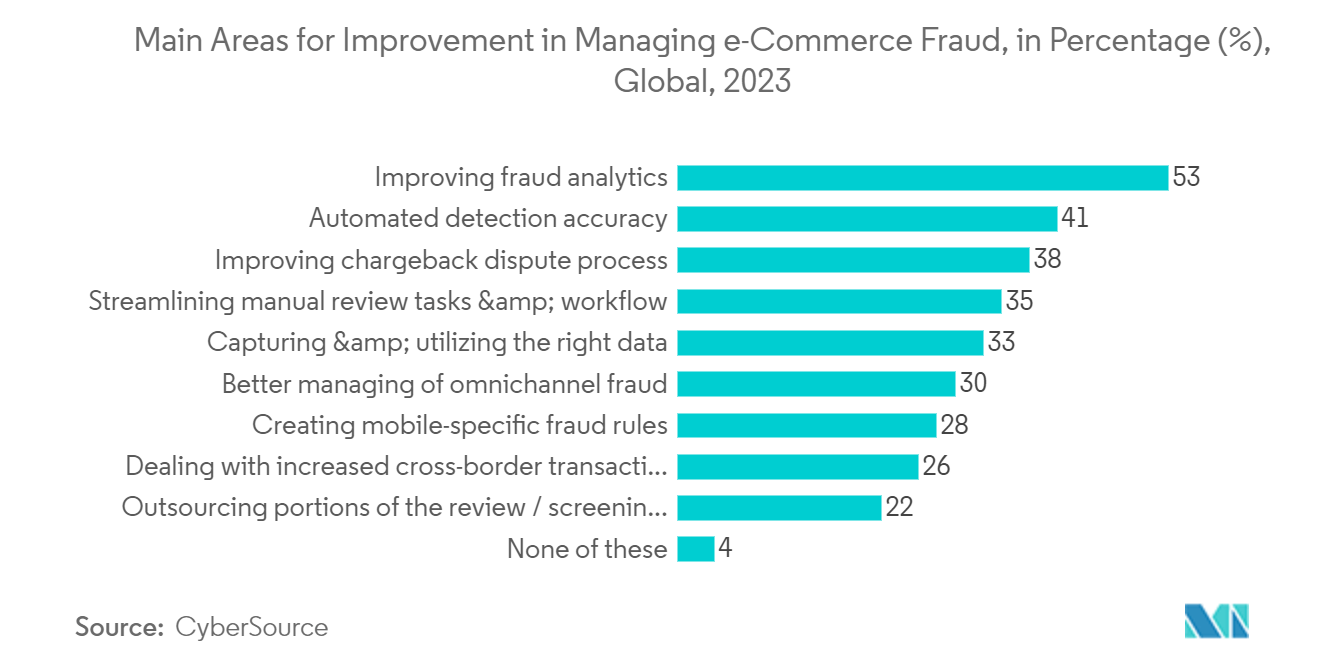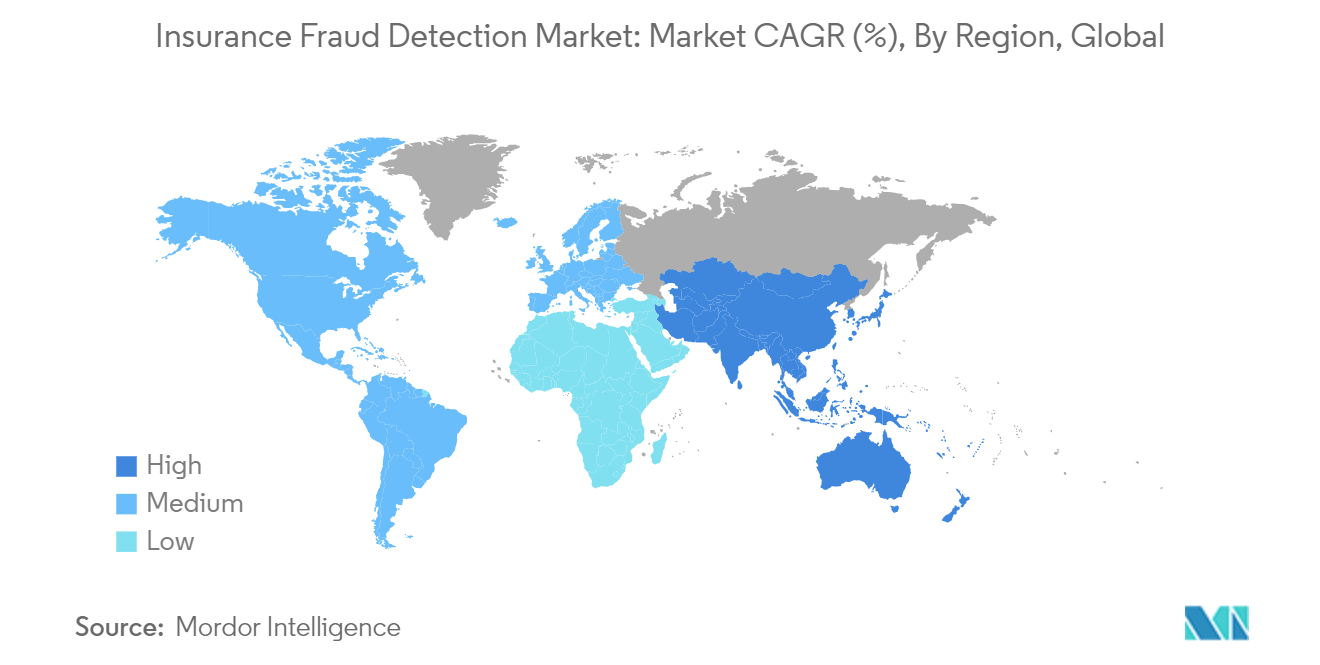Market Trends of Insurance Fraud Detection Industry
Fraud Analytics Solution Segment is Expected to Hold Significant Market Share
- Insurance fraud analytic solutions can improve the accuracy of fraud detection, leveraging the capabilities of artificial intelligence (AI), machine learning, and predictive modeling, which could be helpful for the user to identify instances of suspicious behavior and proactively protect themselves against fraudulent claims, driving the demand of the insurance fraud analytics solutions in the market.
- Insurers have been paying a significant amount for fraudulent claims annually, increasing the importance of insurance fraud detection and creating an opportunity for the market's growth in countries worldwide. For instance, in June 2023, the City of London Police's Insurance Fraud Enforcement Department (IFED) published data collected about insurance fraud between March 2022 and April 2023. It stated that the country had witnessed an increase of 61% in insurance fraud during the study period, which shows the increasing risk of insurance fraud in the end users, fueling the need for insurance fraud analytic solutions in the market.
- Market vendors provide insurance fraud analytic solutions, including FICO, IBM, Genpact, etc. Using predictive modeling to identify, score, and prioritize possible fraud cases can reduce insurers' fraudulent claims payouts and help them avoid reputational damage or loss of customers because of premium increases, fueling the demand of the market.
- By end user, the BFSI sector, which includes the insurance sector, drives the insurance fraud analytics solutions market growth due to their applications in protecting the insurance companies' business from fraudulent claims.
- For instance, in May 2023, Teradata and FICO, the analytics software provider in the insurance claim market, partnered to bring to market integrated advanced analytic solutions for real-time payments fraud insurance claims by incorporating AI-powered decision automation and optimization to financial services, which shows the demand for fraud analytical solutions in the BFSI sector.
- Digitalization in the banking, insurance, and healthcare sectors is supporting the market's growth due to the availability of online data. Due to the digitalization process, it is helpful for end users to adopt fraud analytic solutions for better risk management, which is expected to drive the market's growth during the forecast period.

North America to Hold Largest Market Share
- The market growth in the country is driven by the growing number of younger Americans who are increasingly subjected to insurance fraud, where they are generally more tolerant of non-fraudulent crimes. Younger Americans view insurance fraud as a cost of doing business with insurance companies. Due to this, insurance businesses incur losses with fraud claims. To minimize these losses, insurance companies tend to adopt these solutions.
- According to the Coalition Against Insurance Fraud, insurance fraud costs the United States more than USD 308 billion annually. The Federal Bureau of Investigation (FBI) estimates that insurance fraud costs an average family between USD 400 and 700 in premiums annually. With the growing adoption of technology and the emergence of new capabilities such as generative AI, the threat of fraud is expected to increase.
- The increase in successful fraud tends to make consumers pay the price. Insurance companies are forced to pass the cost of fraud on to consumers through higher insurance premiums, impacting various aspects of the economy. For instance, employers must increase insurance premiums due to fraud. Thus, to respond to these challenges, insurance companies are adopting fraud detection solutions.
- With the rapidly increasing sophistication of insurance fraud in Canada, identifying suspicious claims efficiently and preventing insurance fraud during claims adjudication has become essential for insurance businesses. Thus, companies such as TD Insurance expanded their manual and analytics-based fraud detection and prevention capabilities by implementing the FRISS Case Management Tool and Claims Fraud Detection solution to efficiently identify suspicious and fraudulent claims during the claims adjudication procedure.
- The overall cost of insurance in Canada has been rising in recent years, putting pressure on insurance companies to control expenses and reduce losses. For instance, car insurance premiums increased to 4.6% nationwide due to inflation, as per the latest price index. As the prices of vehicles increase, the cost of car insurance increases. This leads to increased use of fraud detection solutions by insurance businesses that offer insurance to the automotive sector to maintain profitability.
- In October 2023, the Équité Association launched a national insurance crime detection platform that uses predictive analytics and machine learning (ML) to detect and prevent insurance fraud. This platform leverages a consortium-based approach to commit insurance-related crimes, which cost Canadians an estimated USD 3 billion to USD 5 billion annually. Such launch of new platforms is anticipated to encourage vendors to introduce new solutions, increasing competition in the market. The Canadian insurance fraud detection market is mainly driven by initiatives by insurance businesses to minimize losses by claim frauds and the shift toward analytics-based fraud detection solutions that help them offer better consumer experience to policyholders.


